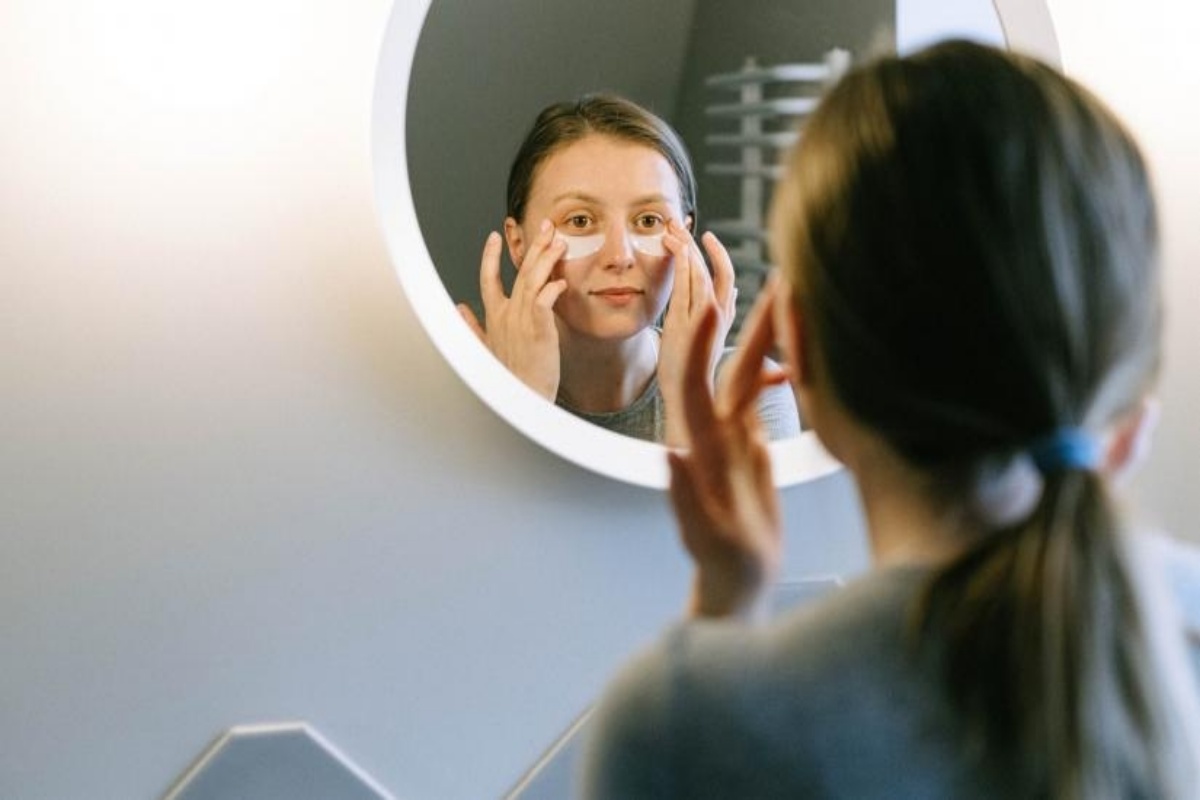The skincare industry is witnessing a remarkable evolution, thanks to the influence of young consumers who are reshaping the market. Gone are the days of single-ingredient products, as millennials and Gen Z have ushered in a new era of multi-benefit skincare solutions that are stealing the spotlight.
Traditionally, skincare products focused on singular skin concerns, but this trend is rapidly shifting towards powerful formulations that tackle multiple issues simultaneously, from hydration and brightening to anti-ageing and blemish-fighting properties. With enthusiasm, the savvy young generation has embraced these innovative products, recognising their potential to deliver maximum impact with minimal effort.
The rise of multi-active ingredients in skincare has transformed the industry, catering perfectly to the fast-paced lives of today’s youth. Time-saving and user-friendly, these products seamlessly integrate into busy routines while providing transformative results. It’s a perfect match for the dynamic millennial and Gen Z lifestyle, where efficiency and effectiveness are paramount. The profound industry transformation is being driven by the discerning preferences of young consumers, who seek comprehensive solutions that can address their diverse skin needs in a single go.
Nikhat, the driven Founder of Farmistry, speaks with IANSlife about her ideas on the multi-active ingredient skincare trend and how she established a brand.
Could you share with us the inspiration behind founding Farmistry and your vision for revolutionising the skincare industry with multi-active ingredient products?
Nikhat: Until 5 years ago the Indian skincare landscape largely had products with either low-quality ingredients or claims-based marketing – where you can claim a benefit even if the product contains just 0.1 per cent of that ingredient. In the meanwhile, around the world brands were moving to active ingredients which were scientifically proven and very effective. That’s when the dream of building an active-based Indian skincare line came about and Farmistry was born.
I was passionate about building an indigenous brand that puts consumers first, but Covid delayed the launch which turned out to be a blessing. Had I launched pre-Covid, Farmistry would have been on a similar platform as Minimalist, Dermaco etc. They have numerous serums each claiming a hero is active. So you have multiple products for the same skin issue from the same brand! Once many brands got on this platform the race for the highest per cent began.
If one brand has 5 per cent Niacinamide serum the next one launches 10 per cent or 15 per cent making the consumer believe a higher per cent is better. This is not true and potentially harmful. Every active has an optimal per cent range which has been studied for maximum effectiveness. Anything above that increases the risk of irritation. Today, someone with hyperpigmentation is inundated with 5-10 different serums of the same brand with varying per cent.
There is so much consumer confusion that it has led to increased skin anxiety and Farmistry needed to address that.
Skincare should not be confusing. Decades of research show us you need multiple actives in specific percentages to better treat skin issues. We decided to target Indian skin issues one product at a time and build exceptionally effective products. The vision is to create a sustainable brand that builds trust, trials and repurchases while reducing the consumer confusion and anxiety that exists today.
The shift from single-ingredient to multi-benefit skincare solutions is a significant trend. What led you to believe that combining various active ingredients into one product could be more effective for addressing diverse skin concerns?
Nikhat: Two things – scientific literature and consumer talk. Firstly, we know exactly how these active ingredients work in the skin thanks to decades of scientific studies. There are numerous papers written by research scientists on what combinations of actives work best on which skin conditions.
Secondly, spending months speaking with consumers and mining insights on the existing confusion about activities, percentages, and brands, was the confirmation I needed to build Farmistry as India’s 1st multi-active skincare brand. Multi-active products are the future of skincare because they are, plain and simple, better formulated to address skin problems.
Farmistry’s approach emphasises the importance of efficiency and effectiveness in skincare routines. How do you ensure that your products maintain a balance between delivering multiple benefits while remaining user-friendly and easy to integrate into busy lifestyles?
Nikhat: The focus is not on multiple benefits but on multiple actives for a specific benefit. Through research, we have a list of the biggest skin issues facing Indian consumers. We plan on launching products to tackle these issues. Our first product, Spotlight, targets one of the most common issues, hyperpigmentation that may be in the form of dark spots, acne marks, PIH, sunspots, uneven skin tone etc. So, a consumer does not need to buy 2-3 different serums for hyperpigmentation. They can use Spotlight which has multiple anti-pigmentation actives hence a more effective well-rounded solution and is efficient since they need just 1 product instead of 3.
With the rise of multi-benefit skincare, how does Farmistry research and determine the right combination of active ingredients and optimal percentages to achieve the desired results?
Nikhat: As I mentioned, the research is in the public domain. It boils down to the brand’s research and innovation capability. The R&D team at Farmistry ideates on product concepts that will suit all skin types. There are many iterations and internal testing as ingredients must work well together and the formulation must be stable. In addition, the product cost must be feasible as correct pricing is critical in a highly competitive skincare market. We then create samples and test them with consumers on parameters such as efficacy, feel on the skin, signs of discomfort, time it takes to work etc. Once we are satisfied that we have a winning solution is when we start preparing for launch. This process can take many months and sometimes even a year.
The preferences of millennial and Gen Z consumers are reshaping the skincare market. How does Farmistry stay attuned to the evolving needs and desires of this dynamic demographic?
Nikhat: Every generation is more intelligent than the preceding one. 10 years ago most products were priced between Rs 50-100. Who would have thought consumers will talk about ingredients and their percentages and will be willing to pay upwards of Rs 500. Millennials and increasingly Gen Z value quality. They buy from brands that engage with them. Social media, video content, humour, product info, and brand values are some of the levers a brand can use to connect with this segment. They do not like to be preached or talked down to and they appreciate honesty and vulnerability from a brand.
For Farmistry, consumers are the centre of its design. Continuous conversations with consumers give many valuable insights on usage and behaviours besides invaluable feedback on competition brands and products.
In a world where customization is increasingly valued, how does Farmistry cater to individual skin concerns while offering multi-active ingredient products? Are there any plans for personalised skincare solutions?
Nikhat: There are 2 methods of customization or personalisation – one is product customisation and the other is skincare routine customisation.
Product customisation is where a brand creates a custom product for a consumer based on the benefits sought by them. Usually, you can choose 4-5 benefits and the product is couriered to you in a few days. As these brands must make the product only after an order is placed the prices are usually very high to keep the business sustainable. One of the values of Farmistry is to make skincare affordable. As we become larger the intention is to drop prices as we reach scale hence product customisation is not on the anvil.
The other type of customisation is regime customisation. This could be either via a brand helping a consumer build their skincare routine or consumers themselves self-educating and being aware of their skin types/needs to tailor their routine. The advent of AI too is a promising area where brands or consumers could build custom routines easily. This can help lessen consumer confusion and handhold them to get better results. It is especially useful while targeting customers who are not clued into actives/formulations skincare terminology. Currently, we address this with skin & ingredients education through our socials, but it is an area we shall further evaluate in the future.
As the founder of Farmistry, how do you see the brand’s role in driving the ongoing transformation towards a more holistic and results-driven approach to skincare within the industry?
Nikhat: Finally, the skincare industry is walking the talk. Results are assured if formulations are made with well-researched ingredients. Farmistry’s role in this is to take it one step further and create complex solutions that simplify skincare.
Another part to play is that of a brand which is more than just its products. It is an entity that speaks with consumers and listens to them. The promise of instant results and perfect skin can be an attractive way for a new brand to drive trials. Unfortunately, it feeds on the inherent anxiety of beauty consumers. We base our values on being upfront about the efficacy of our products and not setting unrealistic expectations for the sake of sales. While taking this road less travelled comes at a cost we believe these are values worth standing by. It is what will help us stand apart from our competition and build consumer trust in the brand over time.
Innovation is key in the skincare industry. How does Farmistry continue to push boundaries and introduce new concepts or products that align with the multi-benefit skincare revolution?
Nikhat: The concept of having multi-active products implicitly means there are multi-benefits. Multi-benefit is a subset of multi-active. Right now our aim is to tackle the biggest skin problems in the most effective way possible by formulating products with multiple active ingredients. Having multiple activities means there are multiple benefits. From a marketing standpoint, multi-benefit works when needs/benefits are closely related. For instance, a sunscreen that has antioxidants and brightening actives not only protects against UV rays but also prevents sun damage and pigmentation.
With Spotlight serum, we have targeted different types of hyperpigmentation. Sunspots, age spots, uneven skin tone, tanned skin, and acne marks all can be with this one product. It was very challenging to find a lab to develop a product with so many actives. eIte was the 1st of its kind in India. Even abroad there are countable brands who have ventured into this territory. It is an innovation breakthrough to launch such a potent yet non-irritating and lightweight product. We have done the same with our pipeline products which shall roll out pre-Diwali. We will continue to challenge the boundaries we can offer the Indian beauty consumer.
Looking into the future, what trends do you anticipate shaping the skincare industry further? How will Farmistry adapt and stay ahead in this evolving landscape?
Nikhat: Growth of Active based skincare – I think the trend towards active-based skincare will continue. We will even see “natural” “organic” and “vegan” brands introduce actives as a part of their offerings. Luckily, we are already in this space and will continue to push the envelope with innovative offerings.
The advent of AI – This has been a while in the making and with the entry of ChatGPT the era of AI has arrived. This could mean increasing customization of skincare routines, consumer self-education, try-on features in cosmetics or tinted skincare products, real-time customer service, content creation and strategy, helping reduce consumer confusion and even things like product development. The applications will increase as we discover the limits of AI’s capabilities.
Simplification of Consumer preferences – Currently we are still in the era of multiple products. K beauty culture with its 7-step routine drove this regime. While many are into the idea of a multi-step routine it is difficult to keep up and expensive. The onslaught of numerous products has also led to consumer fatigue. Consumers will increasingly look to simplify their dressers and live with lesser products that do more.
End of “Greenwashing” – Since the 90s brands have spoken of climate focus and the impact of plastics due to the environment. However, the industry is guilty of greenwashing. It is a practice where claims of “recyclable” and “made from waste” are unsubstantiated and sometimes false. This has dented the industry’s trust in being serious about lowering its impact on the climate. It means consumers increasingly put a lower value on these claims even if they are true for some brands.












